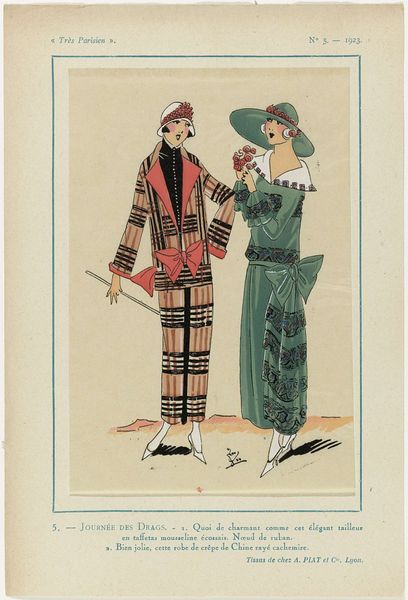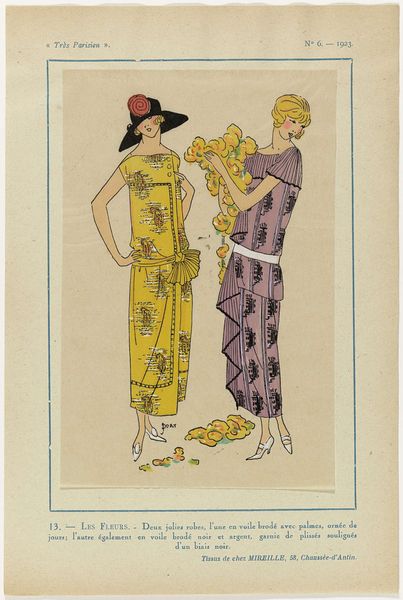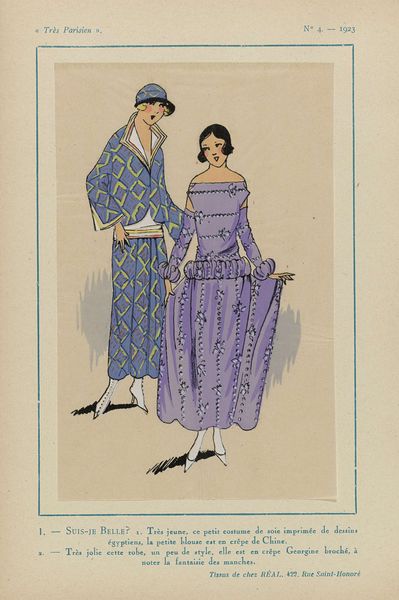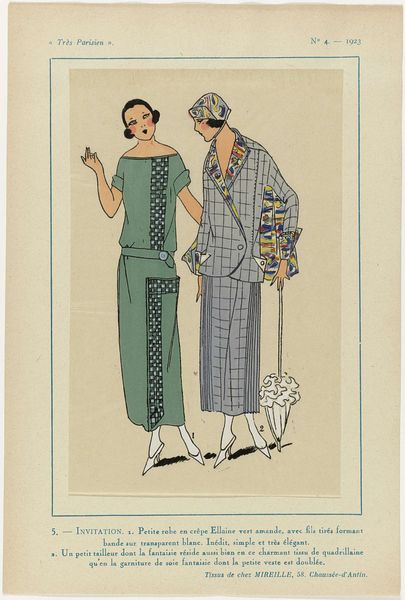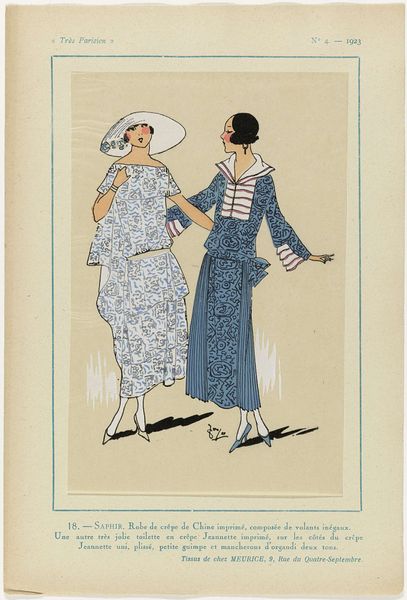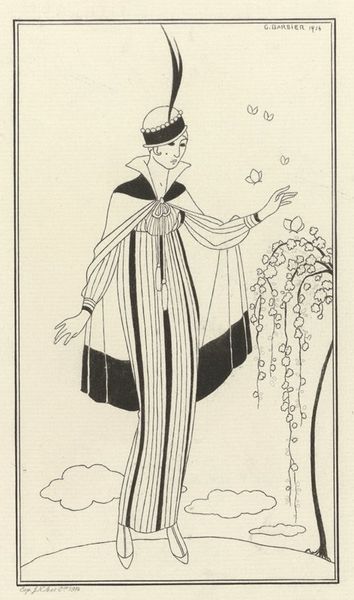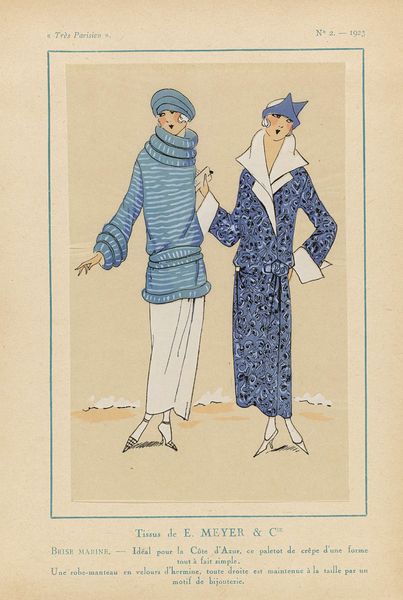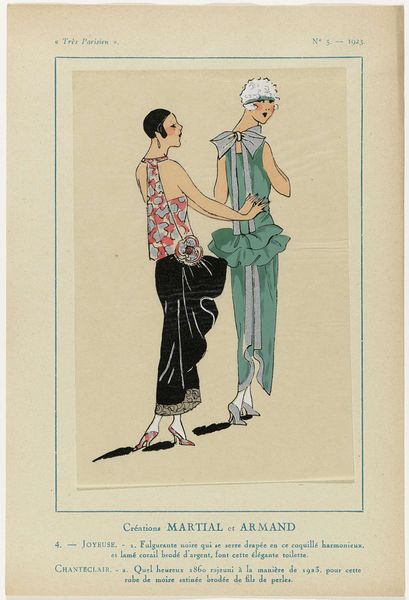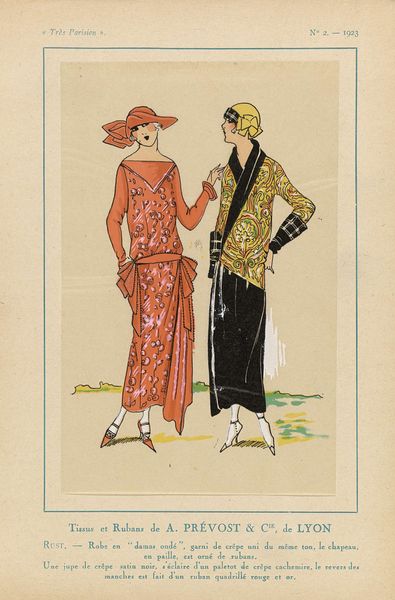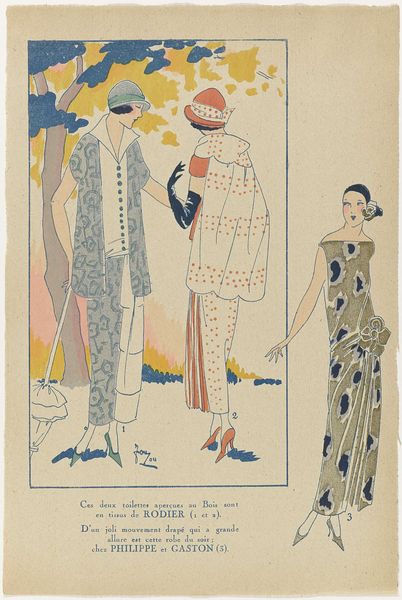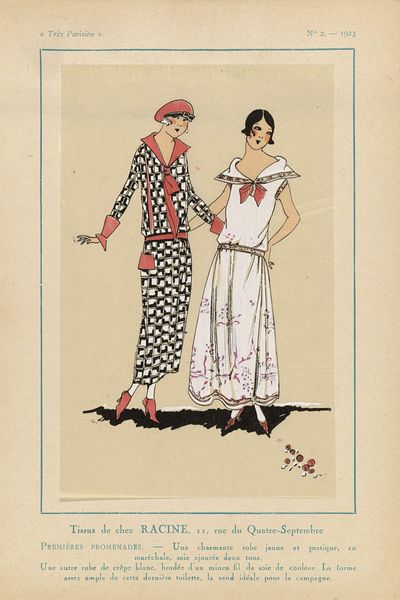
Dutch Couple (Oranda), published by Fujiokaya KeijirÅ Possibly 1861
0:00
0:00
Dimensions: Paper: H. 36.7 cm x W. 25.5 cm (14 7/16 x 10 1/16 in.)
Copyright: CC0 1.0
Curator: This woodblock print, entitled "Dutch Couple (Oranda)," was created by Utagawa Yoshiiku, a late Edo to Meiji period artist. It's published by Fujiokaya Keijirō and now resides at the Harvard Art Museums. Editor: They look rather…awkward. The coloring, while striking, feels a bit clumsy and the figures seem stiff, almost caricatured. Curator: Indeed. This print reflects Japan’s increasing interest in, yet limited understanding of, Westerners during that period. “Oranda," meaning Dutch, was often used broadly for Europeans. Editor: Ah, so the Dutch attire here is more of a symbolic representation than a literal depiction. The woman carrying a doll, for instance – what does that suggest? Is it a symbol of Western materialism or perhaps a playful commentary on cultural exchange? Curator: Precisely. The doll could signify cultural appropriation or the exotic allure Western goods held. And the man's rather peculiar "Dutch" military garb hints at a similar misunderstanding, or perhaps even satire. Editor: It’s fascinating how this image encapsulates a nation grappling with foreign influence, using symbolic shorthand that's both humorous and insightful. Curator: A visual record of a society on the cusp of immense change, wrestling with its identity.
Comments
No comments
Be the first to comment and join the conversation on the ultimate creative platform.
